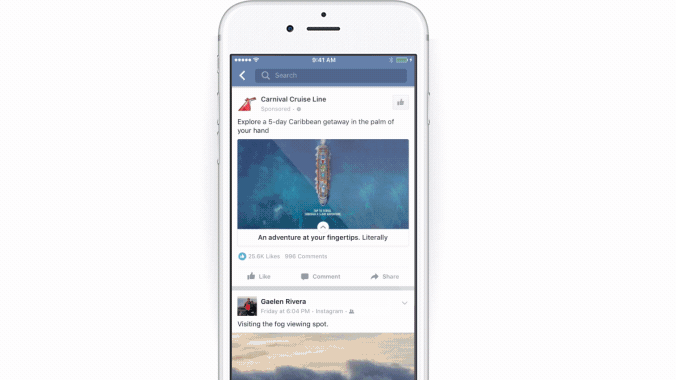A few years ago Business Insider famously published an article entitled “It’s More Likely You Will Survive A Plane Crash Or Win The Lottery Than Click A Banner Ad.” Their list of things you’d have a greater chance of doing:
- Winning a Mega Millions lottery prize
- Getting accepted to Harvard
- Completing Navy SEAL training
- Climbing Mt. Everest
- Surviving a plane crash
Why the disdain? Back then, banner ads were quite restricted. They could only convey so much and had limited capabilities. Advertisers had to work with :15 of movement and a strict KB limit. Fast forward a few years, and not much has improved. Although targeting has become more advanced, there’s still little room for storytelling, especially with a 320×50 or 728×90 ad size.
There’s a new ad format available now: Facebook Canvas. It’s the next step after Apple’s interactive iAds and may change how we make online ads. If you know about Facebook’s instant articles, Canvas ads are similar for brands. These quick-loading units support video, GIFs, large images, and interactive features.
Prior to Canvas’ official launch at the end of February, Facebook tested the format with Carnival Cruise Line, Gatorade, Target, Wendy’s, L’Occitane and Michael Kors. Coke, Burberry, Guinness, ASUS and Lowe’s have also embraced the format [you can see several ad examples here]. Not surprisingly, the multimedia ad units have been wildly successful in grabbing consumer attention.
Digiday reports that Carnival Cruise Line saw Facebook users spend almost 3 minutes with their ad. They also stated 50% of those who opened the ad scrolled through to the end. Similarly, Wendy’s cited that 39% of ad openers viewed their Canvas ad to completion for an average engagement time of just over a minute. L’Occitane experienced a lower engagement time (34 seconds) but did share that recall was 11% higher than traditional Facebook ads. Collectively Canvas advertisers have seen 2X the clicks of regular ads.
It’s not hard to interpret the above stats as a repudiation of one-dimensional marketing efforts (we’re looking at you, banner ad). Instead, it shows that brands should look for even more ways to embrace rich storytelling opportunities. With Canvas, Facebook borrowed from the playbook of content marketers. Now, as content marketers, it’s time for us to do a little borrowing of our own by producing interwoven — and interactive — experiences like these.
